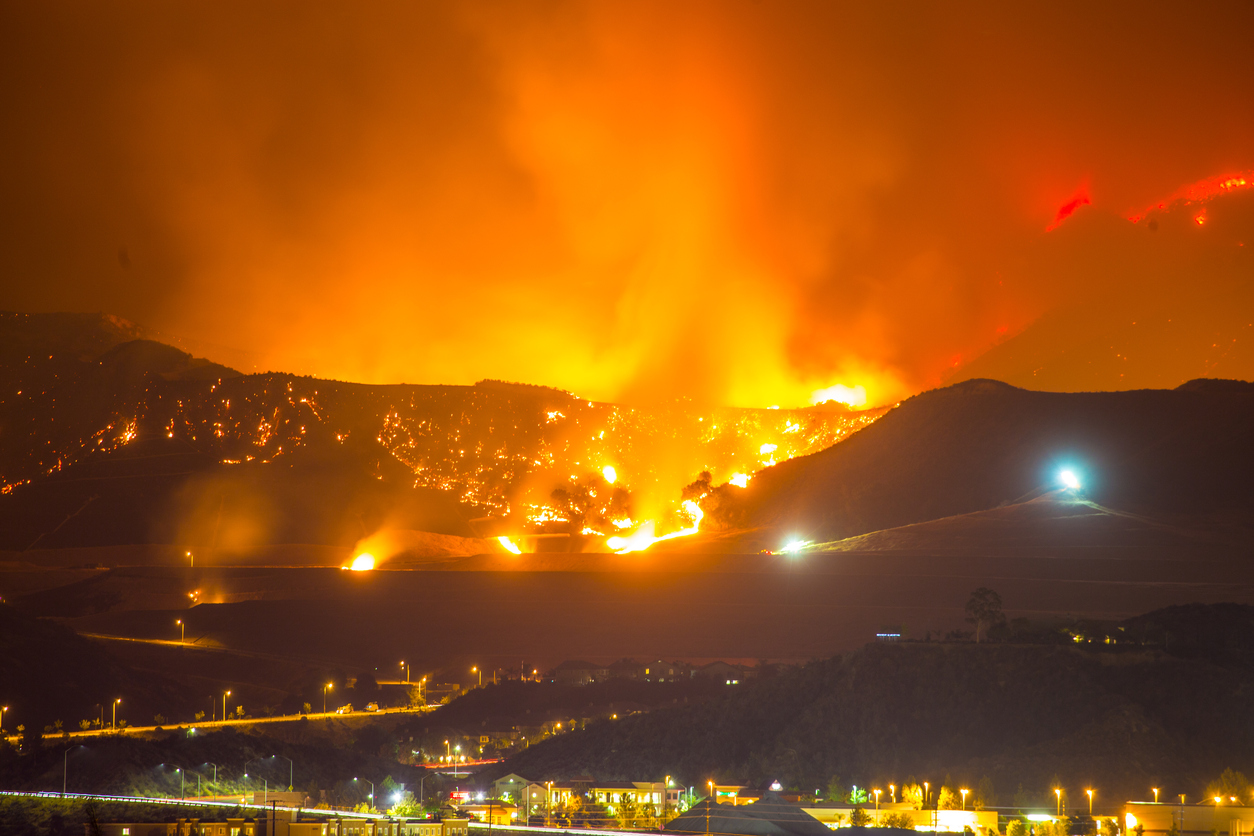But that didn’t prevent the deaths of 43 people in last year’s wine country fire siege. It didn’t prevent the destruction of more than 1,400 structures in the Woolsey fire. It didn’t prevent the Camp fire from wiping the town of Paradise off the map in the worst wildfire disaster in state history.
Deadly California Fires Prompt Bold Thinking About Prevention: Shelters, Strict Zoning, Buyouts
Over the years, California has told homeowners to clear brush around houses, required builders to use fire-resistant materials and ordered them to provide easy access to new developments.
Source: LA Times - Bettina Boxall and Susanne Rust | Published on November 20, 2018

It’s time, some say, for California to move beyond the tried and true.
“We have to really start to think about new measures and new approaches that have to be more drastic,” said Bruce Cain, director of the Bill Lane Center for the American West at Stanford University.
Among them, he said, is “a strategic retreat from communities that are never going to be safe.”
Santa Ana winds send flames galloping across the Santa Monica Mountains to the sea every couple of decades. The Woolsey fire that has claimed three lives is merely the latest to clog Pacific Coast Highway with evacuees and prompt firefighters to say they have never seen anything like it.
On a windy ridge in the Sierra Nevada foothills, the old gold mining town of Paradise has blossomed in recent decades into a working-class retirement community of 27,000. Search crews sifting through its ashen ruins have found 77 dead. More than 14,000 structures are gone.
Last year’s wine country blazes swept across parts of eight counties and incinerated nearly 9,000 buildings.
Such staggering losses, experts say, amount to a public safety problem that demands more than the standard fire-safety requirements.
“All of that is important, but there are other things to be thinking about,” said Tom Jacobson, a land-use attorney and Sonoma State professor of geography, environment and planning.
There is tension, he acknowledged, between a fire-ravaged community’s understandable desire to quickly re-create what it has lost and the need to rebuild in a different way — or perhaps not at all.
“But this is literally life and death,” he said, and the state needs to assume a greater role in the siting and design of new development in high fire-hazard zones.
“We have a lot more ability to predict fire behavior and vulnerability and map those things,” he said. “We know stuff that we didn’t know before. What do we do about it?”
Max Moritz, a cooperative extension wildfire specialist at UC Santa Barbara’s Bren School, has devoted much of his career wrestling with how the nation’s most populous state can coexist with fire, an inevitable product of its spectacular wilds.
“It’s not a land management and wildland fire management problem. It’s an urban planning problem,” he said. “It’s an issue of where and how we build, and how do you get people out in time.”
Moritz suggested that Gov.-elect Gavin Newsom establish a permanent state commission to review development in hazardous fire zones, much as the California Coastal Commission reviews projects along the state’s coastline.
“The challenge for the incoming governor is to actually do something real about this in a holistic, long-term fashion. We need something new,” Moritz argued.
Cain, noting the jealousy with which local officials guard their land-use planning authority, predicted fierce resistance to any move to strengthen state oversight of development in fire-danger zones.
“It’s not something we’re going to be able to dictate on the state level,” he said. Rather, he added, “we have to induce people” to stop building — and rebuilding — in areas that are destined to burn again and again.
Government fire insurance could be withheld from those whose homes go up in smoke more than once, Cain suggested. Another approach would be to buy out homeowners in oft-scorched areas, just as some regions in the country have purchased properties that repeatedly flood.
Serial government bailouts of homeowners who make risky choices is “not sustainable economically,” Cain said.
The Camp fire and the wine country firestorm were wind whipped, raining embers and flames on homes before many had a chance to evacuate. Victims died in their houses or perished while fleeing on foot or in vehicles.
In such extreme situations, Moritz said, lives would be saved if people could quickly take refuge in established community fire shelters in their neighborhoods.
“The idea is, if you can’t get out in time, you shouldn’t be running down the street with your children,” he said. “You shouldn’t be trying to evacuate in a traffic jam as it burns over. We have to start thinking a little bit outside of the box. Because we’re clearly not prepared."
Such shelters would be a variation of local fire refuges that Australia created after 173 people died in more than 400 bushfires that raged across the state of Victoria in 2009.
South Australia has 98 “last-resort refuges,” which are either firesafe buildings or open areas that people can go to if flames are bearing down on them. None have yet been used, so there is little information about their effectiveness.
Safety experts also worry that their existence will discourage people from evacuating ahead of a fire.
Living in a hot, dry continent prone to wildfire, many Australians have taken it upon themselves to construct their own fire shelters or bunkers. The internet is rife with instructions and videos on how to build them, and companies offer supply kits, units and installation services.
“Bunkers are possible, but we do discourage them except in high-risk homes on difficult sites,” said Alan March, an urban planning professor at the University of Melbourne.
“Getting to a tiny bunker and relying on cans of air in very unpleasant conditions and being unable to see out and monitor things would be a very unpleasant few hours.”
Are you a retail Agent Looking for a Quote?












